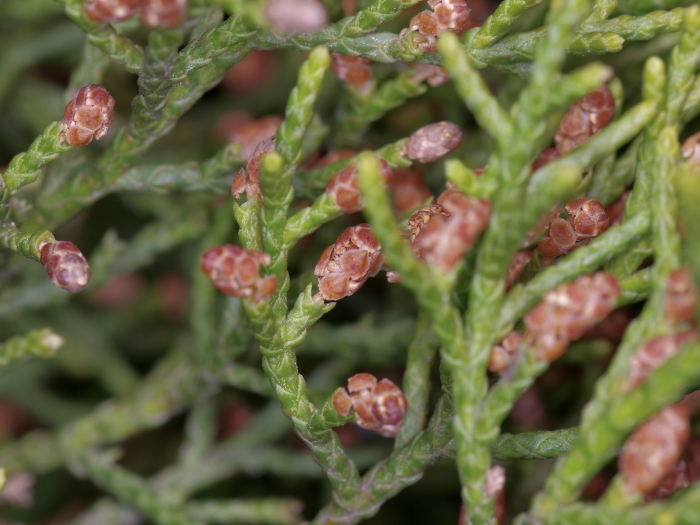Ashe’s Juniper
(Juniperus ashei)
Ashe’s Juniper (Juniperus ashei)
/
/

Michelle W.
CC BY 4.0



















































Estimated Native Range
Summary
Ashe’s Juniper is valued for its drought tolerance and ability to thrive in poor, rocky soils, making it suitable for xeriscaping and naturalistic plantings. It is also used as a windbreak or privacy screen. In cultivation, it requires minimal maintenance once established, tolerating full sun to part shade and preferring well-drained soils. However, it can be susceptible to fungal diseases such as cedar-apple rust when grown in proximity to susceptible species. Gardeners should be aware of its potential to become invasive outside its native range and check local guidelines before planting.CC BY-SA 4.0
Plant Description
- Plant Type: Tree, Shrub
- Height: 15-25 feet
- Width: 15-25 feet
- Growth Rate: Slow
- Flower Color: N/A
- Flowering Season: Non-Flowering
- Leaf Retention: Evergreen
Growth Requirements
- Sun: Full Sun
- Water: Medium
- Drainage: Slow, Medium, Fast
Common Uses
Bird Garden, Deer Resistant, Drought Tolerant, Edible*Disclaimer: Easyscape's listed plant edibility is for informational use. Always verify the safety and proper identification of any plant before consumption., Erosion Control, Fragrant, Hummingbird Garden, Low Maintenance, Rabbit Resistant, Street Planting
Natural Habitat
native to limestone hills, rocky outcrops, and canyons within the Edwards Plateau and surrounding areas in the South-Central United States and Mexico
Other Names
Common Names: Ashe Juniper, Mexican Juniper, Mountain Cedar, Ozark White Cedar, Post Cedar, Rock Cedar, Ozark White-Cedar, Mountain-Cedar, Rock-Cedar, Post-Cedar
Scientific Names: , Juniperus ashei,
GBIF Accepted Name: Juniperus ashei J.T.Buchholz